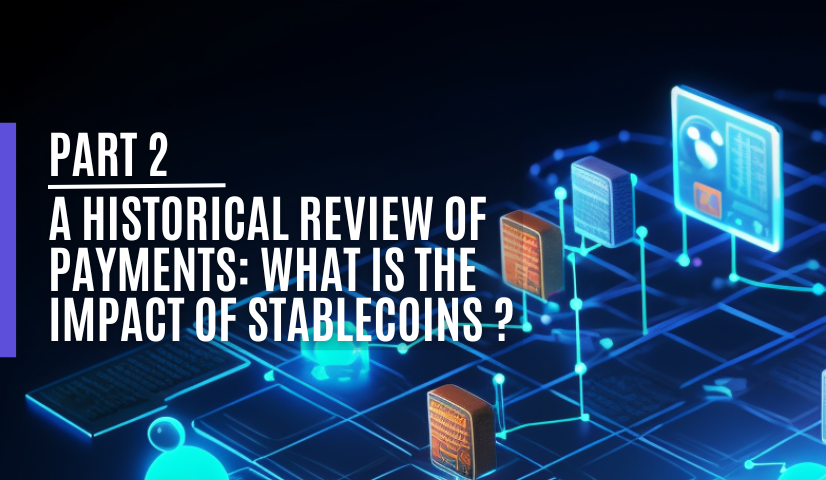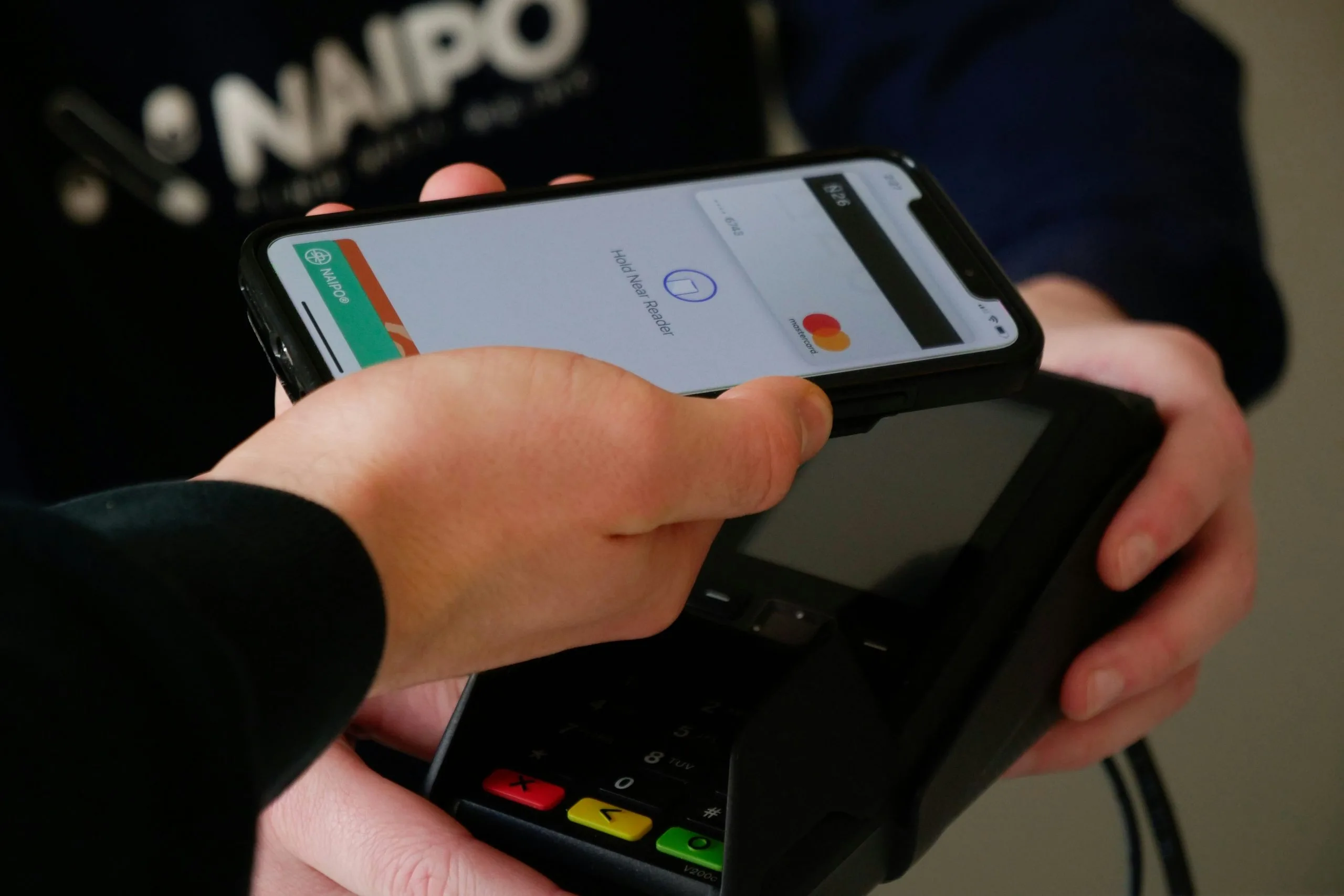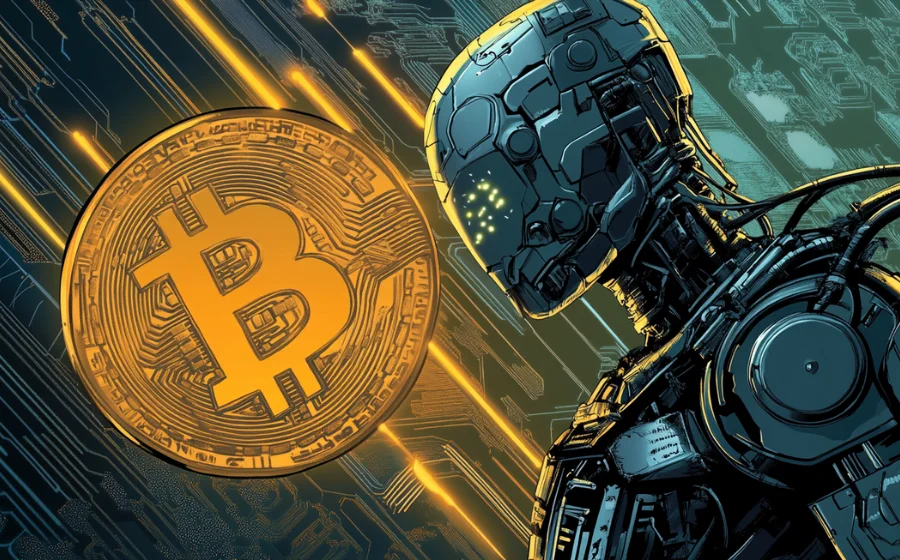
KEYTAKEAWAYS
- Businesses enter the payments industry to access valuable transaction data, offering insights into consumer behavior and trends.
- The payments industry has evolved beyond transaction fees, including models like data analytics, loan interest, and investment income from idle funds.
- Blockchain technology introduces decentralized, programmable money and new revenue opportunities, reshaping the payment landscape.

CONTENT
*This article was originally published in Chinese and on the Blog- Code and law.
WHY EVERYONE WANTS TO ENTER THE PAYMENTS INDUSTRY
After the concept of Fintech became widespread, we often see news about non-financial businesses claiming to enter the payments industry. What is the reason behind it? To answer this question, we need to understand the role that the payments industry plays in the payment process.

Generally, a transaction involves a service provider and a service requester who make the payment. The payments industry acts as an intermediary to facilitate smooth transactions between these parties. Therefore, payment providers that handle a large amount of transaction data will have insights into which transactions have the highest volume, which types of transactions are most common, and the parties’ preferences. In this way, these payment service providers accumulate vast financial data related to transactions and consumption, which can be used to understand future product trends, consumer favorites, and more. This data can be used to uncover the potential of products, predict consumer behaviors for more precise advertising, create consumer credit ratings, and serve as a reference for developing future sources of revenue—a veritable goldmine of data.
However, in the past, such transaction data was often held by the financial industry and not easily accessible. For non-financial businesses, entering the payments industry is a direct means of obtaining this information. It can not only help their core business grow but also serve as a foundation for cooperation with the financial industry or other sectors, allowing them to gain insights into user preferences, predict consumer behavior, and improve product marketing efficiency.
So, the target of the payments industry is more than just the transaction fees we typically think of. It includes the data behind the payments and has led to the development of various new revenue models in the payments industry beyond the standard transaction fee model. Below are some common business models in the payments industry.
BUSINESS MODELS IN THE PAYMENTS INDUSTRY
1. Transaction Fee:
Transaction fee is the most common business model in the payments industry, where payment providers earn revenue by charging a certain percentage of fees for each transaction. For example, credit card companies charge a certain percentage of fees based on the amount of each card transaction. Online payment platforms like PayPal and Square charge a certain fee for money transfer transactions. These fees can be collected from consumers or merchants.
2. Cross-Border Exchange Rate:
Companies specializing in cross-border payments, such as remittance services, earn profits from the exchange rate difference in currency conversion or by charging higher transaction fees for international transactions. Common examples include PayPal, which is often used for cross-border remittances, and Wise, which primarily focuses on providing competitive currency exchange rates compared to traditional banks.
3. Payment Infrastructure Services:
Companies that provide payment infrastructure services often offer devices (such as POS terminals) or software solutions to businesses. They may generate revenue by leasing or selling equipment, as seen with companies like Verifone and Ingenico. On the other hand, some payment service providers offer integrated online payment systems and charge businesses or individual users a fixed monthly or annual subscription fee. Users gain access to integrated payment services, which is common among payment platforms offering value-added services. For instance, Shopify Payments provides payment processing services for businesses on the Shopify platform, and merchants pay a monthly subscription fee. Stripe, the other example, offers a Software-as-a-Service (SaaS) payment platform that handles payments, income, and invoicing services, catering to the needs of e-commerce businesses, creators, and companies in collecting payments.
4. Advertising and Data Analytics:
Due to the vast amount of payment data collected in the payments industry, which is a prime source of financial information, many non-financial businesses seek to enter the payments industry as it provides the most direct channel for acquiring financial data. Technology companies exceling in analyzing information and understanding consumer behavior exploit it as their strength. Some companies leverage payment services to gain access to transaction data, enhancing the stickiness of their platforms and core businesses. They analyze transaction data to provide market insights and advertising services to third parties, generating revenue in the process. Companies like Google Pay or Apple Pay may use their extensive transaction data for market analysis and targeted advertising.

5. Loan or Credit Interest Income:
Some payment providers, especially those involved in financial credit services like credit card companies, generate revenue from transaction fees and interest earned on delayed payments or credit loans. Interest is generated if users opt for installment payments or fail to settle their balances. For instance, in China, Alipay offers consumers a specific credit limit for spending based on data analysis. If users are unable to repay their balance, interest charges may happen.
6. Investment Income from Idle Funds:
Payment service providers often have to deal with funds stored in user payment accounts not immediately used for payments. There is typically a certain percentage of idle funds. As a result, some payment providers aim to generate interest or returns on these idle funds by investing them in banks or secure investments without affecting the user’s payment process. For instance, an early development model used by Alipay in China involved earning interest from funds stored in banks or assisting users in investing small amounts of idle funds in mutual funds, generating income from these activities by charging fees.
BLOCKCHAIN’S IMPACT ON THE PAYMENTS INDUSTRY
One of the key features of blockchain technology, particularly in public blockchain systems, is its ability to achieve decentralization, maintain open access to data and systems, and prevent data tampering. This open and transparent nature of blockchain has significant implications for the payments industry and introduces the following three characteristics:
1. Open System:
One of the key features of blockchain technology, especially public blockchains, is its openness and transparency. It operates as a large collaborative platform where users can exchange information, transfer value, or develop applications based on the blockchain’s nature. Payment systems built on blockchain differ from traditional payment systems where integration and communication between various databases or APIs are often required. With systems built on blockchain, users can directly exchange information based on the blockchain’s characteristics, avoiding the need for additional communication and integration costs between different databases. Additionally, blockchain-based systems operate 24/7, 365 days a year.
2. Non-Monetary Payment Experiences:
Non-monetary payment experiences refer to exchanging digital goods, such as NFTs (Non-Fungible Tokens), digital services, or in-game items and characters. These digital assets are often built on blockchains, making them easily transferable across regions and the globe. It enables payments between parties for digital goods, and these assets can also be exchanged for other digital assets, similar to a barter system. For example, in the future, ownership rights to a game item and access to an online course could both be represented as electronic certificates on a blockchain. On the blockchain, these certificates can create a marketplace for trading and can be combined with cryptocurrencies, offering various transaction possibilities.
3. Programmable Money:
Apart from its role in facilitating transactions, blockchain technology, especially in the case of cryptocurrencies and NFTs, allows for the creation of decentralized applications (DApps) on blockchain platforms like Ethereum. These applications were evident during the past DeFi (Decentralized Finance) boom.
One interesting phenomenon that arises from it is the integration of stablecoins issued on the blockchain with DApps. Since both stablecoins and DApps are designed and built upon blockchain technology, they can complement each other effectively. In this context, it becomes possible to set up DApps and leverage smart contract functionality to trigger automatic transfers of stablecoins when specific conditions are met. The development of DeFi, based on these features, has led to various financial applications beyond speculative trading. We can anticipate the automation of functions related to collateral, guarantees, and even execution of court decisions, with all facilitated by programmable smart contracts.
PAYMENTS INDUSTRY PATTERNS ON THE BLOCKCHAIN
1. Stablecoin Business Model
The business model of stablecoins, such as USDC issued by Circle, typically maintains a 1:1 peg to a reserve of traditional fiat currency, like the US dollar. When a customer deposits one US dollar, Circle issues one USDC to the customer, and this process does not involve any transaction fees for the customer. Essentially, customers can use USDC on various blockchains without incurring additional costs, except for standard blockchain transaction fees paid to miners.
You might wonder how Circle generates revenue without transaction fees. Circle’s profit model is based on investing the US dollars collected during USDCissuance. They invest the funds in short-term government bonds and earn interest income. Additionally, Circle may deposit the funds in a bank to earn interest. This approach offers two key advantages: earning interest on the reserve funds and ensuring liquidity. Government bonds are relatively liquid assets, so if customers want to redeem USDC for US dollars, Circle can quickly sell these bonds to meet customer demands. In contrast, banks may face challenges if they need to accommodate significant cash withdrawals, as they often lend out deposited funds.
This business model demonstrates the unique characteristics of the blockchain payments industry. Since USDC operates primarily on blockchain systems, Circle doesn’t have significant system overheads, reducing operational costs. However, to gain customer trust, Circle must focus on regulatory compliance and maintaining transparency regarding the fiat currency assets backing USDC.
The primary revenue-generating mechanism is utilizing the time difference between customers acquiring USDC and redeeming it for US dollars. During this time, Circle invests the acquired US dollars in government bonds and earns interest from banks, allowing them to avoid charging transaction fees to customers. This approach falls under the category of profiting from idle funds. However, it also exposes a significant challenge: if many customers simultaneously redeem USDC for US dollars, Circle needs to sell bonds or withdraw bank deposits to meet the demand. Overreliance on interest income from bonds can make the company financially vulnerable when facing substantial US dollar redemption requests.

2. Cryptocurrency Payment Gateway
Because public blockchains like Ethereum allow the development of decentralized applications (DApps), some developers have created decentralized exchange systems. These systems enable the exchange of various cryptocurrencies with the same standards but different types. This development has led to an interesting trend where some payment service providers are exploring how to integrate the functionality of decentralized exchanges. They aim to offer users the ability to make payments with various cryptocurrencies while providing merchants with a specific type of currency, such as stablecoins.
This model opens up multiple possibilities for payments. Merchants can accept various types of cryptocurrencies, but through the payment service provider, they can receive the cryptocurrency they prefer. In this context, the role of the payment service provider is akin to that of a cryptocurrency multi-payment gateway (referred to as a “cryptocurrency payment gateway”). It allows payers diverse payment choices, but merchants can specify the currency they wish to receive. Payment service providers act as intermediaries, assisting payers, merchants, and decentralized exchanges in connecting. If a merchant desires fiat currency, they can exchange it themselves or receive assistance from the cryptocurrency payment gateway provider.
By offering this service model, payment service providers essentially serve as software infrastructure for cryptocurrency payments, akin to how various payment services operate in traditional finance. The means of payment, as long as they are digital assets built on a blockchain with a suitable decentralized exchange, have the potential for expansion, enabling payments not only in cryptocurrencies but also in assets like NFTs or various blockchain assets.
CONCLUSION
This article introduces various business models in the payments industry, ranging from the common practice of collecting payment service fees or profiting from the exchange rate differences in cross-border remittances to the development of systemic services that allow businesses to accept various payment methods. It also touches on how some payment providers have ventured into financial services by offering credit loans, earning interest from loans, and utilizing users’ idle funds for investment.
The author highlights that the most significant impact of blockchain on the payments industry is its ability to break free from the isolated systems of payment service providers. Instead, it leverages blockchain systems’ development and standardization capabilities, allowing different payment providers to operate within the same global system architecture. Blockchain’s anti-tamper consensus mechanism and transparency enhance the reliability and verifiability of value transfer. Furthermore, blockchain allows for the creation of DApps, enabling programmable editing and integration of the information flow and value transfer on the internet, regardless of financial institutions’ operating hours and information systems, making information acquisition and value transfer more seamless.















